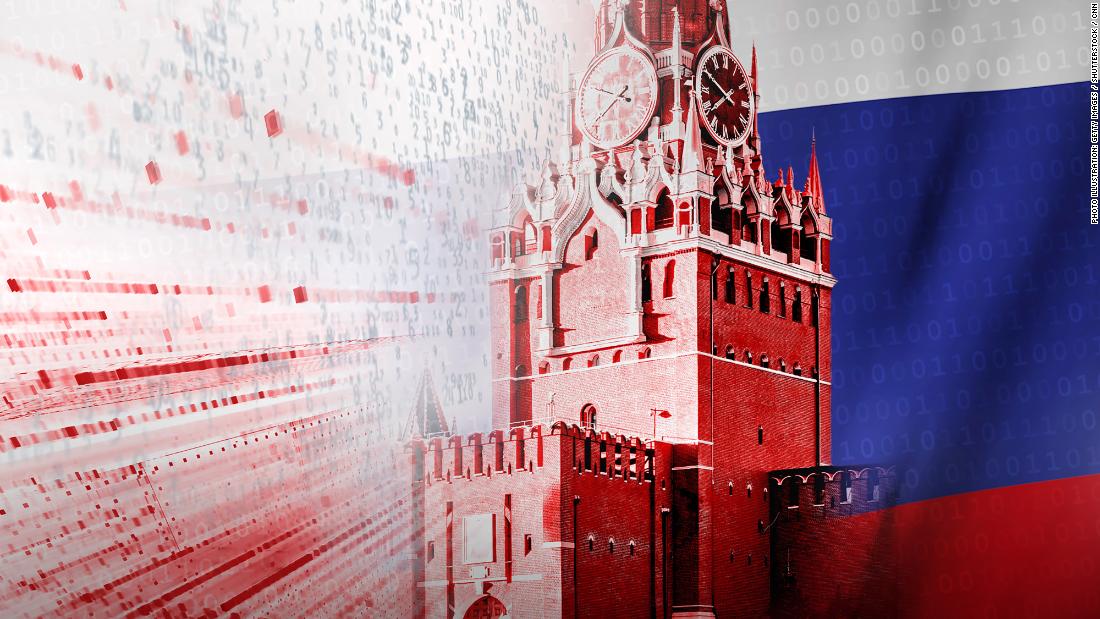
British Politicians on High Alert Russian Cyber Attacks
British politicians put on high alert against Russian cyber attacks – it’s a headline that screams urgency, and rightfully so. The current geopolitical climate is tense, and the threat of sophisticated cyber warfare from state-sponsored actors like Russia is very real. We’re not just talking about annoying spam emails here; we’re talking about potential disruptions to national security, electoral processes, and even critical infrastructure.
This post delves into the specifics of the threat, exploring the vulnerabilities within British political systems and examining the government’s response and preparedness. We’ll also look at what we, as citizens, can do to protect ourselves and contribute to a safer digital landscape.
The potential impact of a successful cyberattack is staggering. Imagine sensitive government data leaked, election results manipulated, or essential services crippled. The stakes are incredibly high, making this a crucial topic for discussion and understanding. We’ll explore real-world examples of past Russian cyberattacks and analyze the potential scenarios facing the UK today, providing context and insight into this escalating cyber war.
The Current Threat Landscape
The UK’s increasingly strained relationship with Russia, marked by the ongoing war in Ukraine and persistent allegations of Russian interference in British affairs, has significantly heightened the cyber security threat level. This isn’t just about espionage; it’s about the potential for disruptive and destructive attacks targeting critical national infrastructure and potentially even causing significant harm to the UK population.
Understanding the nature of these threats is crucial for effective mitigation.The current geopolitical context fuels a high-stakes cyber arms race. Russia possesses a sophisticated cyber warfare capability, developed and honed over years, and its willingness to deploy this capability against perceived adversaries is evident. The UK, as a key NATO ally and a vocal critic of Russia’s actions, is naturally a prime target.
This context demands a proactive and robust cyber defence strategy, going beyond simply reacting to attacks and focusing on preventing them in the first place.
Types of Cyberattacks Employed by Russia
State-sponsored actors like Russia employ a diverse range of cyberattack techniques, often combining them for maximum impact. These attacks are typically highly targeted and well-resourced, leveraging advanced persistent threats (APTs) to gain and maintain access to victim systems. Common methods include phishing campaigns designed to deliver malware, exploiting software vulnerabilities, and deploying custom-built malware for data exfiltration and system disruption.
Denial-of-service (DoS) attacks, while less sophisticated, can still be highly effective in crippling online services. Supply chain attacks, targeting vulnerabilities in software used by many organizations, are also a significant concern.
Examples of Successful Russian Cyberattacks
Numerous successful Russian cyberattacks have been documented, targeting governments, critical infrastructure, and private sector organizations globally. These attacks demonstrate the scale and sophistication of Russia’s cyber capabilities and highlight the potential for devastating consequences. Attribution in cyberattacks is complex, but strong evidence often points to Russian state actors. The NotPetya ransomware attack in 2017, while not directly targeting the UK, caused significant disruption globally and underscored the potential for collateral damage.
Similarly, the SolarWinds supply chain attack, while again not exclusively targeting the UK, showed the potential for widespread compromise through seemingly innocuous software updates.
Comparison of Past Russian Cyberattack Incidents
| Attack Vector | Target | Outcome | Attribution Evidence |
|---|---|---|---|
| Spear phishing, malware delivery | Government agencies (various countries) | Data breach, espionage | Technical analysis of malware, operational patterns |
| Exploitation of software vulnerabilities | Critical infrastructure (power grid, etc.) | Service disruption, potential for physical damage | Timing of attacks coinciding with geopolitical events |
| Supply chain compromise | Multiple organizations globally | Widespread data breach, espionage, disruption | Analysis of compromised software, malware signatures |
| Denial-of-service attacks | Government websites, online services | Service unavailability, disruption of operations | Network traffic analysis, attack patterns |
Vulnerabilities of British Political Systems

The interconnected nature of modern political systems, coupled with the increasing reliance on digital technologies, exposes British political parties and government bodies to a range of cyber threats. These vulnerabilities span various aspects of infrastructure and operations, creating significant risks to national security, public trust, and the democratic process itself. Understanding these weaknesses is crucial for effective mitigation strategies.The reliance on outdated systems, insufficient cybersecurity budgets, and a lack of skilled personnel represent key challenges.
Furthermore, the sheer volume of data held by political parties and government institutions – from voter registration details to sensitive policy documents – makes them prime targets for malicious actors. A successful cyberattack could have far-reaching and devastating consequences.
With British politicians on high alert against increasingly sophisticated Russian cyber attacks, robust digital defenses are more crucial than ever. This heightened threat underscores the importance of proactive security measures, which is why understanding solutions like bitglass and the rise of cloud security posture management is vital. Protecting sensitive government data requires a multi-layered approach, and strong cloud security is a fundamental part of that strategy in the face of these escalating threats.
Outdated Infrastructure and Software
Many legacy systems within British political institutions remain vulnerable to exploitation. These systems, often lacking the latest security patches and updates, represent significant entry points for attackers. For instance, outdated voting machines or poorly secured internal networks could be compromised, leading to data breaches or manipulation of electoral processes. The cost of upgrading these systems, coupled with the perceived low risk in some instances, often delays necessary modernization.
This inertia leaves critical systems susceptible to well-known vulnerabilities.
Human Error and Phishing Attacks
Human error remains a significant vulnerability. Phishing emails, spear-phishing campaigns, and social engineering tactics can successfully target individuals within political parties and government departments. A single compromised account can provide attackers with access to sensitive information or the ability to spread malware across an entire network. The consequences can range from data leaks to complete system shutdowns.
Improved security awareness training and robust authentication mechanisms are crucial to mitigate this risk.
Potential Consequences of a Successful Cyberattack
A successful cyberattack targeting British political systems could have severe consequences. The theft of sensitive government data could compromise national security, expose classified information, and damage international relations. Disruption of electoral processes, through the manipulation of voting systems or the dissemination of disinformation, could undermine public trust and democratic legitimacy. Furthermore, the financial cost of recovering from a major cyberattack, including legal fees, reputational damage, and the cost of implementing new security measures, would be substantial.
The 2016 US election interference serves as a stark reminder of the potential impact of such attacks.
Existing Security Measures
The UK government and political parties have implemented various security measures to mitigate cyber risks. These include investing in cybersecurity infrastructure, improving incident response capabilities, and strengthening data protection regulations. The National Cyber Security Centre (NCSC) plays a crucial role in providing guidance and support to government bodies and political organizations. However, the evolving nature of cyber threats requires ongoing adaptation and investment in new technologies and training programs.
Hypothetical Cyberattack Scenario
Imagine a sophisticated, multi-stage cyberattack targeting multiple British political parties during a general election campaign. The attack begins with spear-phishing emails targeting party staff, delivering malware that grants attackers access to internal networks. This malware then spreads laterally, compromising email servers, databases containing voter information, and campaign strategy documents. The attackers leak sensitive information to the media, sow discord within the parties, and even attempt to manipulate online campaigning tools.
The result would be widespread disruption, loss of public trust, potential election irregularities, and a severe blow to national confidence. The recovery process would be lengthy and costly, involving investigations, legal proceedings, and extensive remediation efforts.
The Government’s Response and Preparedness

The UK government faces a significant challenge in defending its political systems against sophisticated cyberattacks, particularly those originating from state-sponsored actors like Russia. The response necessitates a multi-layered approach, encompassing robust cybersecurity infrastructure, proactive intelligence gathering, and effective collaboration between government agencies, private sector companies, and international partners. The scale and complexity of the threat demand substantial investment and continuous adaptation.The current cybersecurity strategies employed by the British government involve a combination of preventative measures and reactive capabilities.
Significant resources are allocated to the National Cyber Security Centre (NCSC), a part of GCHQ, which provides guidance and support to government departments and critical national infrastructure. This includes vulnerability assessments, threat intelligence sharing, and incident response capabilities. Furthermore, substantial investment is made in developing and deploying advanced cybersecurity technologies, including threat detection systems, intrusion prevention systems, and data loss prevention tools.
However, the exact figures for resource allocation remain largely classified for national security reasons.
Cyber Defence Capabilities Compared to Other Nations
The UK’s cyber defence capabilities are considered among the most advanced globally, ranking alongside the United States, Israel, and China. The NCSC’s proactive approach, coupled with strong collaboration between government and industry, positions the UK effectively. However, the constantly evolving nature of cyber threats necessitates continuous improvement. Comparing the UK to other nations facing similar threats reveals a spectrum of approaches.
For instance, while the US invests heavily in offensive cyber capabilities, the UK’s strategy prioritizes a more defensive posture, leveraging international partnerships for collaborative threat intelligence sharing. The Estonian government, having experienced significant cyberattacks in the past, has developed a particularly robust national resilience framework that serves as a valuable benchmark. Each nation’s approach is shaped by its unique geopolitical context and national priorities.
The Role of Intelligence Agencies and Cybersecurity Firms
Intelligence agencies, primarily GCHQ and MI5, play a crucial role in proactively identifying and mitigating cyber threats. Their expertise in intelligence gathering and analysis allows them to anticipate potential attacks and inform the government’s defensive strategies. They work closely with the NCSC and other government departments to share threat intelligence and coordinate responses. Cybersecurity firms provide essential support by offering a range of services, including penetration testing, vulnerability management, and incident response.
These firms possess specialized expertise in identifying and addressing specific vulnerabilities, often working in collaboration with government agencies to enhance the overall security posture of political institutions. The partnership between government and private sector expertise is critical in maintaining a strong defence.
Recommendations for Improving Preparedness
The ongoing threat necessitates continuous improvement. A robust and adaptable strategy requires a multi-pronged approach.
- Increased investment in cybersecurity infrastructure and personnel across all government departments.
- Enhanced collaboration between government agencies, private sector cybersecurity firms, and international partners.
- Development of more sophisticated threat detection and response capabilities, including artificial intelligence and machine learning.
- Strengthening of data protection and privacy measures to mitigate the impact of potential data breaches.
- Increased public awareness and education campaigns to promote good cyber hygiene practices among government employees and the wider public.
- Regular and rigorous testing and auditing of cybersecurity systems to identify and address vulnerabilities.
- Development of robust incident response plans that are regularly tested and updated to ensure effectiveness.
Public Awareness and Education
In the face of increasingly sophisticated cyberattacks, bolstering public awareness and education is paramount to mitigating their impact. A well-informed populace is less susceptible to phishing scams, malware infections, and other online threats. Furthermore, widespread understanding of cybersecurity best practices can significantly reduce the success rate of attacks targeting individuals and organizations alike. This, in turn, strengthens national cybersecurity resilience.Effective public awareness campaigns play a crucial role in achieving this.
They empower individuals and businesses to proactively defend themselves against the ever-evolving cyber threat landscape.
Examples of Effective Public Awareness Campaigns
Successful campaigns often employ a multi-pronged approach, utilizing various media channels to reach a broad audience. For instance, the UK’s National Cyber Security Centre (NCSC) regularly releases concise, easily digestible advice on topics ranging from strong password creation to recognizing phishing emails. These campaigns are often supported by social media outreach, engaging infographics, and partnerships with influential figures. Another example could be a hypothetical campaign focusing on the dangers of smishing (SMS phishing), utilizing radio ads with memorable jingles and clear instructions on how to identify and report suspicious texts.
The success of such campaigns is measured by increased public understanding and reported reductions in successful cyberattacks.
Best Practices for Individuals and Organizations
Individuals can significantly improve their online security by adopting several key practices. This includes regularly updating software and operating systems, using strong, unique passwords for different accounts, and enabling two-factor authentication wherever possible. Regularly backing up important data to an external drive or cloud service is also crucial. Organizations, on the other hand, should invest in robust cybersecurity infrastructure, conduct regular security audits, and provide comprehensive cybersecurity training to their employees.
Implementing strong access control measures and incident response plans are also vital components of a comprehensive organizational cybersecurity strategy.
Creating a Public Service Announcement (PSA)
Here’s a short script for a public service announcement focusing on simple steps to improve online security:
(Scene: A person sits at a computer, looking concerned.)Announcer: Feeling vulnerable online? Don’t be! Simple steps can make a big difference. (Scene: Close-up of hands typing a strong password.)Announcer: First, create strong passwords – long, unique, and use a mix of upper and lower case letters, numbers, and symbols. (Scene: A phone displaying a suspicious text message is shown.)Announcer: Next, be wary of suspicious emails and texts. Don’t click on links or open attachments from unknown senders.
With British politicians on high alert against potential Russian cyberattacks, robust digital security is more crucial than ever. This highlights the need for efficient and secure application development, which is why I’ve been exploring domino app dev the low code and pro code future – it seems like a game-changer for building secure and scalable apps quickly.
Given the current geopolitical climate, rapid development of secure systems is paramount in mitigating the threat of cyber warfare.
(Scene: Software update notification appears on a computer screen.)Announcer: Keep your software updated! Regular updates patch security vulnerabilities. (Scene: The person smiles confidently at the computer.)Announcer: Take control of your online security. Small actions, big protection. Visit [website address] for more information.
International Cooperation and Collaboration: British Politicians Put On High Alert Against Russian Cyber Attacks
International cooperation is absolutely crucial in the fight against sophisticated state-sponsored cyberattacks. No single nation possesses all the resources or expertise needed to effectively defend against the constantly evolving threat landscape. Sharing information, coordinating responses, and leveraging collective capabilities are essential to building a robust global cyber defence.The interconnected nature of the internet means that a cyberattack in one country can quickly have global ramifications.
This necessitates a collaborative approach, where nations work together to identify threats, share intelligence, and develop effective countermeasures. Failure to cooperate leaves individual nations vulnerable and allows malicious actors to exploit weaknesses in global systems.
Successful International Collaborations in Cybersecurity
Effective international collaboration in cybersecurity requires a multi-faceted approach, encompassing intelligence sharing, joint operations, and the development of common standards and best practices. Several successful examples demonstrate the power of this approach. These partnerships often focus on specific threat actors or types of cybercrime, allowing for focused expertise and resource allocation.
The Role of International Organizations and Treaties in Addressing Cybersecurity Threats, British politicians put on high alert against russian cyber attacks
International organizations and treaties play a vital role in establishing norms, facilitating cooperation, and providing a framework for addressing cybersecurity threats. These bodies can help to coordinate national responses, promote information sharing, and develop common standards for cybersecurity practices. However, the effectiveness of these organizations and treaties often depends on the willingness of member states to cooperate and abide by the established norms.
The challenge lies in balancing national interests with the need for collective action. Significant progress has been made in establishing international norms around cyber warfare, although enforcement and accountability remain significant challenges.
Examples of Successful International Cybersecurity Partnerships
| Partnership | Focus | Outcome |
|---|---|---|
| Five Eyes Intelligence Alliance (US, UK, Canada, Australia, New Zealand) | Sharing intelligence on cyber threats, particularly state-sponsored attacks. | Improved threat detection and response capabilities, disruption of malicious cyber operations. Enhanced coordination in investigating and prosecuting cyber criminals. |
| EU Agency for Cybersecurity (ENISA) | Developing cybersecurity standards, providing expertise to member states, and coordinating responses to major cyber incidents. | Increased harmonization of cybersecurity policies and practices across the EU. Improved preparedness for and response to large-scale cyberattacks. |
| Cybersecurity Information Sharing Partnerships (various bilateral and multilateral agreements) | Sharing threat intelligence, vulnerabilities, and best practices. | Faster identification and mitigation of cyber threats, improved incident response times, strengthened collective cybersecurity posture. |
Closing Notes
The threat of Russian cyberattacks against British politicians and institutions is a serious and evolving concern. While the government has implemented various security measures, vigilance and proactive strategies are paramount. The ongoing need for international collaboration, public awareness, and robust cybersecurity infrastructure is undeniable. Ultimately, safeguarding our digital world requires a multi-faceted approach involving governments, organizations, and individuals alike.
Staying informed and taking personal responsibility for online security is crucial in navigating this complex and increasingly dangerous landscape. Let’s stay vigilant and work together to build a more resilient digital future.
Question & Answer Hub
What specific types of cyberattacks are British politicians most vulnerable to?
Phishing attacks targeting personal email accounts, malware designed to steal sensitive information, and sophisticated attacks targeting government networks are all significant threats.
What role do private cybersecurity firms play in protecting British politicians?
They provide crucial expertise in threat detection, incident response, vulnerability assessments, and security training, often working in conjunction with government agencies.
How can ordinary citizens help protect against Russian cyberattacks?
By practicing good online hygiene, including using strong passwords, being wary of phishing emails, and keeping software updated, citizens can reduce their vulnerability and indirectly contribute to national security.
What international organizations are involved in combating state-sponsored cyberattacks?
Organizations like NATO, the UN, and various cybersecurity alliances play key roles in information sharing, coordinating responses, and developing international norms around cyber warfare.





